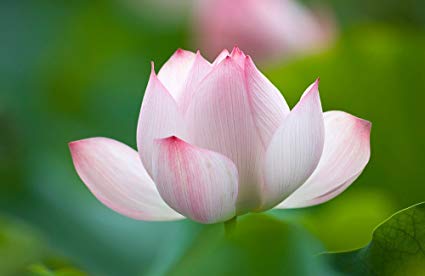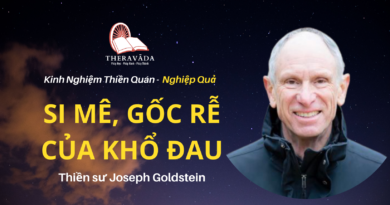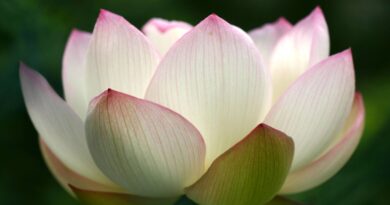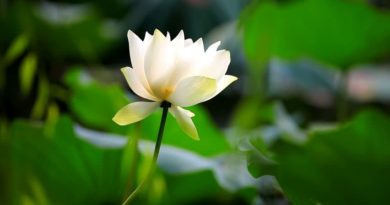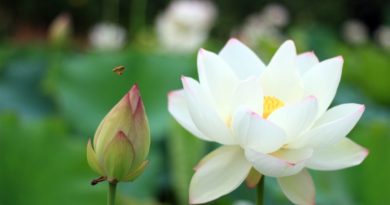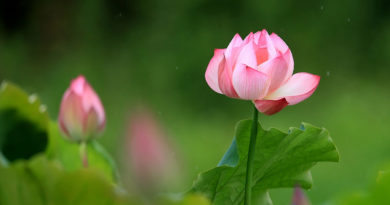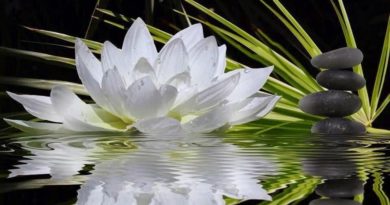Going For Refuge & Taking The Precepts – Iv. The Act Of Going For Refuge – Bhikkhu Bodhi
IV. THE ACT OF GOING FOR REFUGE
To enter the door to the teaching of the Buddha it is not enough merely to know the reference of the refuge-objects. The door of entrance to the teaching is the going for refuge to the Buddha, the Dhamma, and the Sangha. To understand what the refuge-objects mean is one thing, to go to them for refuge is another, and it is the going for refuge alone that constitutes the actual entrance to the dispensation.
But what is the going for refuge? At first glance it would seem to be the formal commitment to the Triple Gem expressed by reciting the formula of refuge, for it is this act which marks the embracing of the Buddha’s teaching. Such an understanding, however, would be superficial. The treatises make it clear that the true going for refuge involves much more than the reciting of a pre-established formula. They indicate that beneath the verbal profession of taking refuge there runs concurrently another process that is essentially inward and spiritual. This other process is the mental commitment to the taking of refuge.
The going for refuge, as defined by the commentaries, is in reality an occasion of consciousness: “It is an act of consciousness devoid of defilements, (motivated) by confidence in and reverence for (the Triple Gem), taking (the Triple Gem) as the supreme resort.”[3] That the act is said to be “devoid of defilements” stresses the need for sincerity of aim. Refuge is not pure if undertaken with defiled motivation — out of desire for recognition, pride, or fear of blame. The only valid motivation for taking refuge is confidence and reverence directed towards the Triple Gem. The act of consciousness motivated by confidence and reverence occurs “taking the Triple Gem as the supreme resort,” (parayana). That the Triple Gem is taken as the “supreme resort” means that it is perceived as the sole source of deliverance. By turning to the threefold refuge as supreme resort, the going for refuge becomes an act of opening and self-surrender. We drop our defenses before the objects of refuge and open ourselves to their capacity to help. We surrender our ego, our claim to self-sufficiency, and reach out to the refuge-objects in the trust that they can guide us to release from our confusion, turmoil, and pain.
Like any other act of consciousness the going for refuge is a complex process made up of many factors. These factors can be classified by way of three basic faculties: intelligence, volition, and emotion. To bring the act of going for refuge into clearer focus we will take the mental process behind the outer act, divide it by way of these faculties, and see how each contributes to its total character. That is, we will examine the going for refuge as an act of intelligence, will, and emotion.
Before doing this, however, one word of caution is necessary. Any particular phenomenon represents far more than is immediately visible even to a deeply probing inspection. A seed, for example, has a much greater significance than the grain of organic matter that meets the eye. On one side it collects into itself the entire history of the trees that went into its making; on the other it points beyond to the many potential trees locked up in its hull. Similarly the act of consciousness involved in taking refuge represents the crystallization of a vast network of forces extending backwards, forwards, and outwards in all directions. It simultaneously stands for the many lines of experience converging upon its formation out of the dim recesses of the past, and the potential for future lines of development barely adumbrated in its own immediate content. This applies equally to the act of taking refuge as a whole and to each of its constituting factors: both the whole and its parts must be seen as momentary concretions with a vast history, past and future, hidden from our sight. Therefore what emerges out of an analytical scrutiny of the refuge-act should be understood to be only a fraction of what the act implies by way of background and future evolution.
Turning to the act of taking refuge itself, we find in the first place that it is an act of understanding. Though inspired by reverence and trust, it must be guided by vision, by an intelligent perceptivity which protects it from the dangers of blind emotion. The faculty of intelligence steers the act of refuge towards the actualization of its inner urge for liberation. It distinguishes the goal from the distractions, and prevents the aspirant from deviating from his quest for the goal to go in pursuit of futile ends. For this reason we find that in the formulation of the noble eightfold path right view is given first. To follow the path we must see where it leads from, where it goes, and the steps that must be taken to get from the one point to the other.
In its initial form the faculty of intelligence involved in taking refuge comprehends the basic unsatisfactoriness of existence which makes reliance on a refuge necessary. Suffering has to be seen as a pervasive feature infecting our existence at its root, which cannot be eliminated by superficial palliatives but only by a throughgoing treatment. We must come to see further that the causes of our dissatisfaction and unrest lie within ourselves, in our clinging, craving, and delusions, and that to get free from suffering we must follow a course which extinguishes its causes.
The mind also has to grasp the reliability of the refuge-objects. Absolute certainty as to the emancipating power of the teaching can only come later, with the attainment of the path, but already at the outset an intelligent conviction must be established that the refuge-objects are capable of providing help. To this end the Buddha has to be examined by investigating the records of his life and character; his teaching searched for contradictions and irrationalities; and the Sangha approached to see if it is worthy of trust and confidence. Only if they pass these tests can they be considered dependable supports for the achievement of our ultimate aim.
Intelligence comes into play not only with the initial decision to take refuge, but throughout the entire course of practice. The growth of understanding brings a deeper commitment to the refuges, and the deepening of the inner refuge facilitates the growth of understanding. The climax of this process of reciprocal development is the attainment of the supramundane path. When the path arises, penetrating the truth of the teaching, the refuge becomes irreversible, for it has been verified by direct experience.
The going for refuge is also an act of volition. It results from a voluntary decision free from coercion or outside pressures. It is a choice that must be aparappaccaya, “not compelled by others.” This freely chosen act brings about a far-reaching restructuring of volition. Whereas previously the will might have been scattered among a multitude of interests and concerns, when the taking of refuge gains ascendency the will becomes ordered in a unified way determined by the new commitment. The spiritual ideal comes to the center of the inner life, expelling the less crucial concerns and relegating the others to a position subordinate to its own direction. In this way the act of refuge brings to the mind a harmonization of values, which now ascend to and converge upon the fundamental aspiration for deliverance as the guiding purpose of all activity.
The act of taking refuge also effects a deep-seated reversal in the movement of the will. Before refuge is taken the will tends to move in an outward direction, pushing for the extension of its bounds of self-identity. It seeks to gain increasing territory for the self, to widen the range of ownership, control and domination. When refuge is sought in the teaching of the Buddha the ground is laid for this pattern to be undermined and turned around. The Buddha teaches that our drive for self-expansion is the root of our bondage. It is a mode of craving, of grasping and clinging, leading headlong into frustration and despair. When this is understood the danger in egocentric seeking comes to the surface and the will turns in the opposite direction, moving towards renunciation and detachment. The objects of clinging are gradually relinquished, the sense of “I” and “mine” withdrawn from the objects to which it has attached itself. Ultimate deliverance is now seen to lie, not in the extension of the ego to the limits of infinity, but in the utter abolition of the ego-delusion at its base.
The third aspect of going for refuge is the emotional. While going for refuge requires more than emotional fervor, it also cannot come to full fruition without the inspiring upward pull of the emotions. The emotions entering into the refuge act are principally three: confidence, reverence, and love. Confidence (pasada) is a feeling of serene trust in the protective power of the refuge-objects, based on a clear understanding of their qualities and functions. Confidence gives rise to reverence (gaurava), a sense of awe, esteem, and veneration born from a growing awareness of the sublime and lofty nature of the Triple Gem. Yet this reverence does not remain cool, formal, and aloof. As we experience the transforming effect of the Dhamma on our life, reverence awakens (pema). Love adds the element of warmth and vitality to the spiritual life. It kindles the flame of devotion, coming to expression in acts of dedicated service by which we seek to extend the protective and liberative capacity of the threefold refuge to others.

